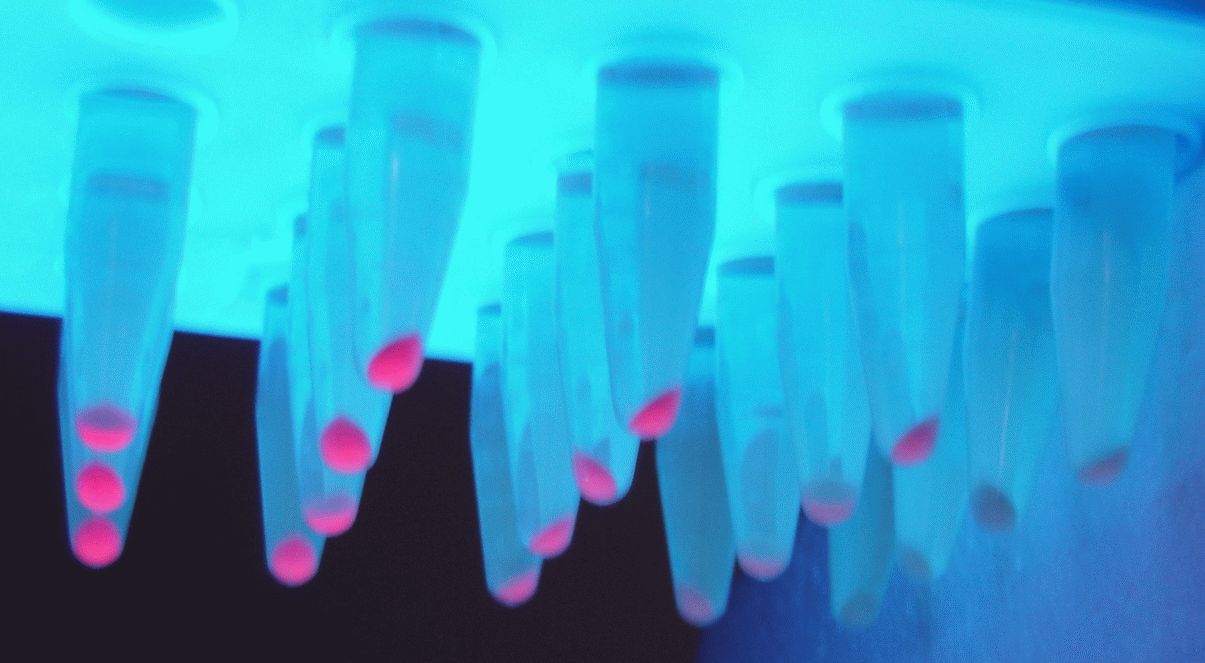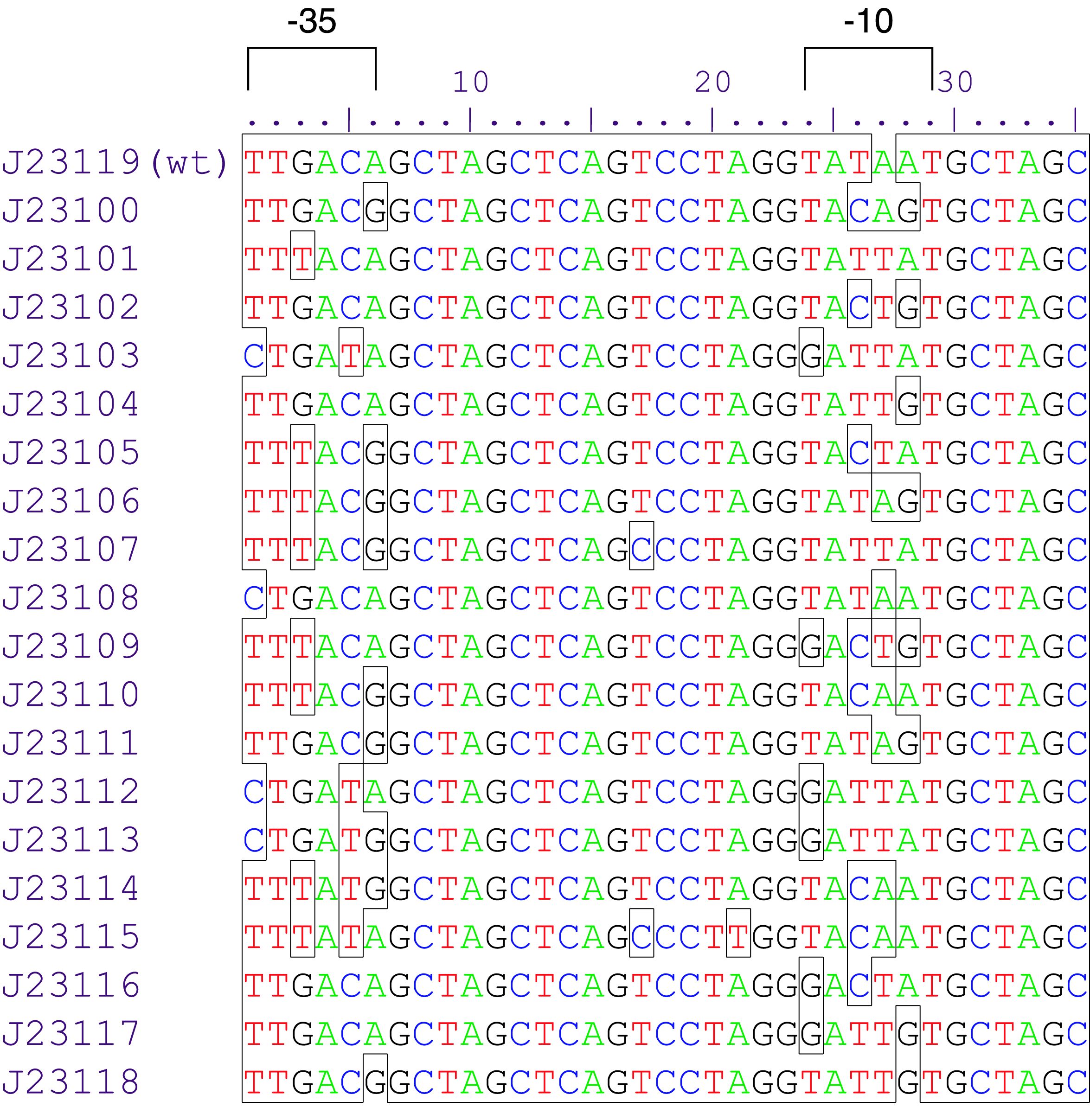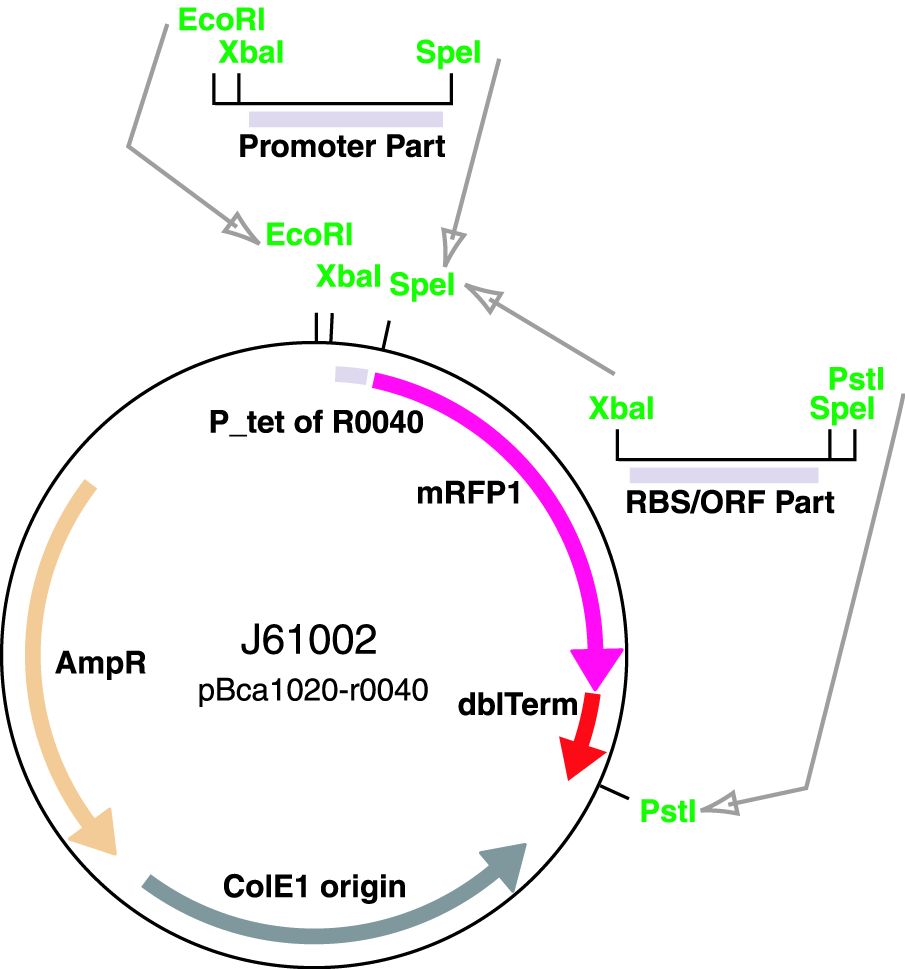Part:BBa_J23115
constitutive promoter family member
Variant RFP (au) J23112 1 J23103 17 J23113 21 J23109 106 J23117 162 J23114 256 J23115 387 J23116 396 J23105 623 J23110 844 J23107 908 J23106 1185 J23108 1303 J23118 1429 J23111 1487 J23101 1791 J23104 1831 J23102 2179 J23100 2547 |
Constitutive promoter family
Parts J23100 through J23119 are a family of constitutive promoter parts isolated from a small combinatorial library. J23119 is the "consensus" promoter sequence and the strongest member of the family. All parts except J23119 are present in plasmid J61002. Part J23119 is present in pSB1A2. This places the RFP downstream of the promoter. Reported activities of the promoters are given as the relative fluorescence of these plasmids in strain TG1 grown in LB media to saturation. See part BBa_J61002 for details on their use.
These promoter parts can be used to tune the expression level of constitutively expressed parts. The NheI and AvrII restriction sites present within these promoter parts make them a scaffold for further modification. JCAraw
Sequence and Features
- 10COMPATIBLE WITH RFC[10]
- 12INCOMPATIBLE WITH RFC[12]Illegal NheI site found at 7
Illegal NheI site found at 30 - 21COMPATIBLE WITH RFC[21]
- 23COMPATIBLE WITH RFC[23]
- 25COMPATIBLE WITH RFC[25]
- 1000COMPATIBLE WITH RFC[1000]
Usage and Biology
Lambert_GA 2019 Characterization
Lambert_GA 2019 tested several combinations of constitutive promoters and ribosomal binding sites to characterize each by measuring enzyme activity and therefore protein expression. The gene expressed, LacZ, codes for β-galactosidase (β-gal), which typically breaks down lactose. Instead of using lactose, we added the sugar ONPG (Ortho-Nitrophenyl-β-galactoside). β-gal breaks ONPG down into galactose and ONP (Ortho-Nitrophenol), which has a yellow color. If there is more ONP present, there is more enzymatic activity and therefore more expression of LacZ. We used a plate reader to measure absorbance at 420 nm, measuring yellow color, and 600nm, measuring cell density. We inputted those absorbance values into the Miller unit formula to calculate enzymatic activity per cell per milliliter.
USTC_2009's MEASUREMENT
//direction/forward
//promoter/anderson
//regulation/constitutive
//rnap/prokaryote/ecoli/sigma70
| negative_regulators | |
| positive_regulators |

 1 Registry Star
1 Registry Star

